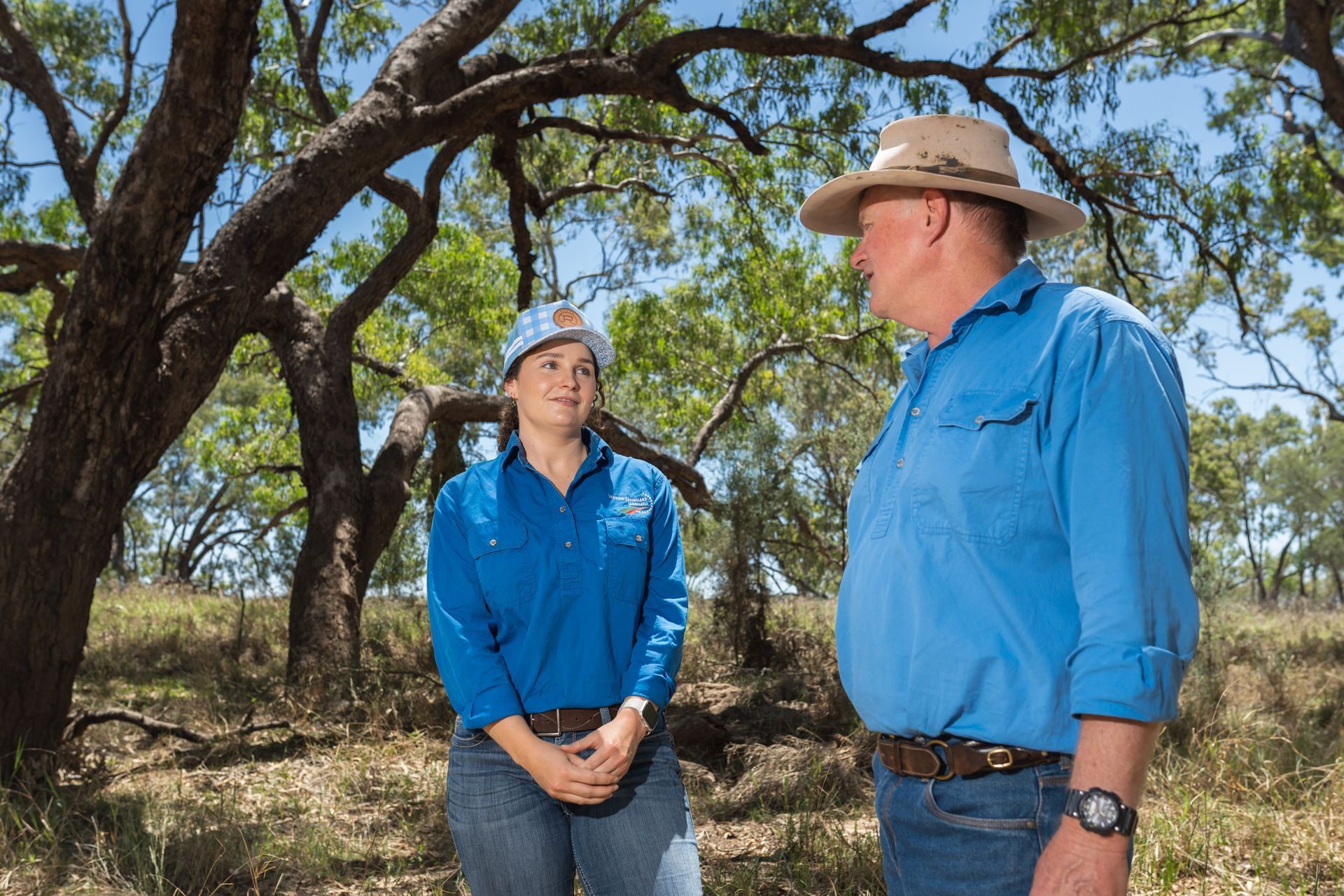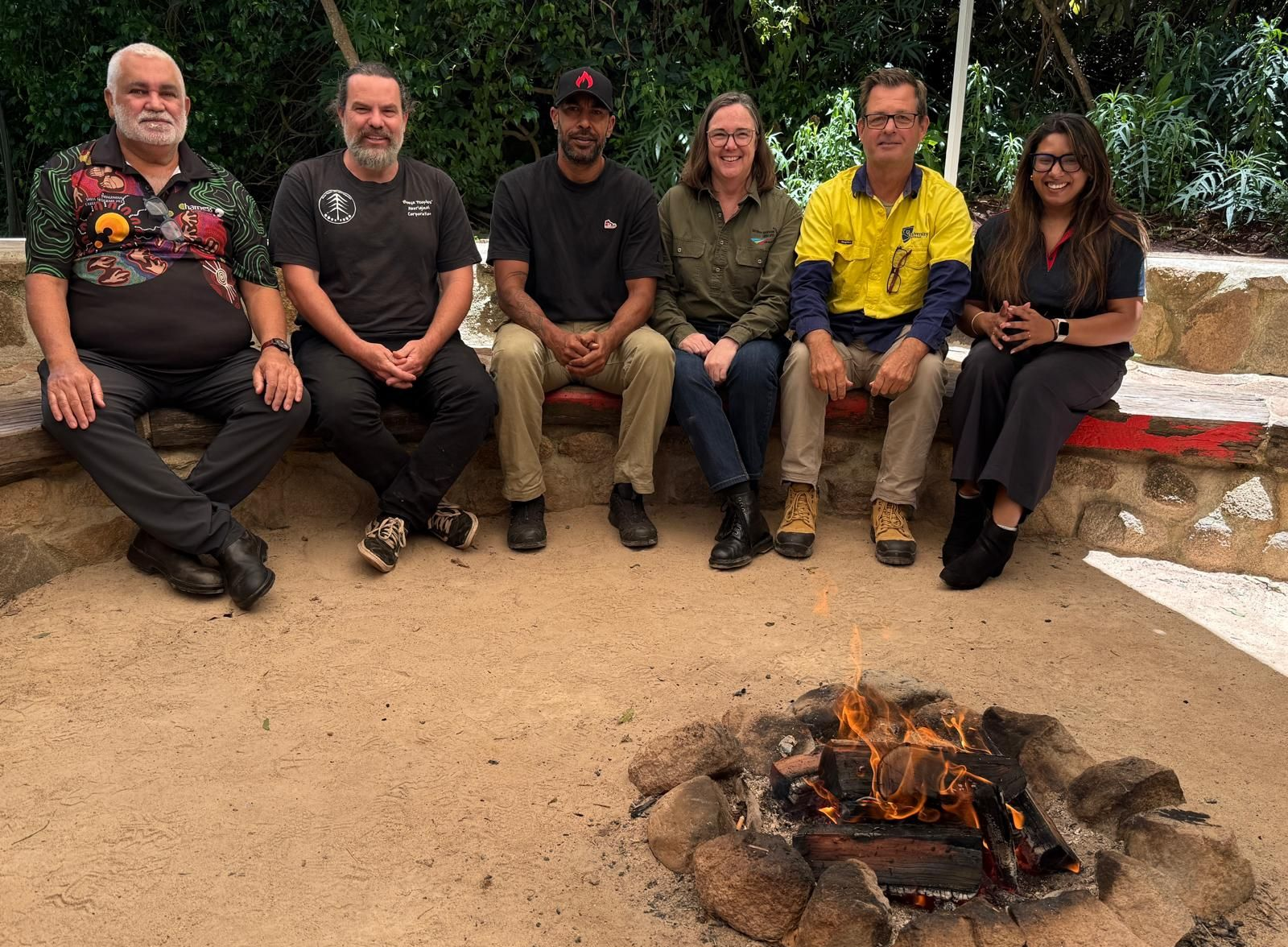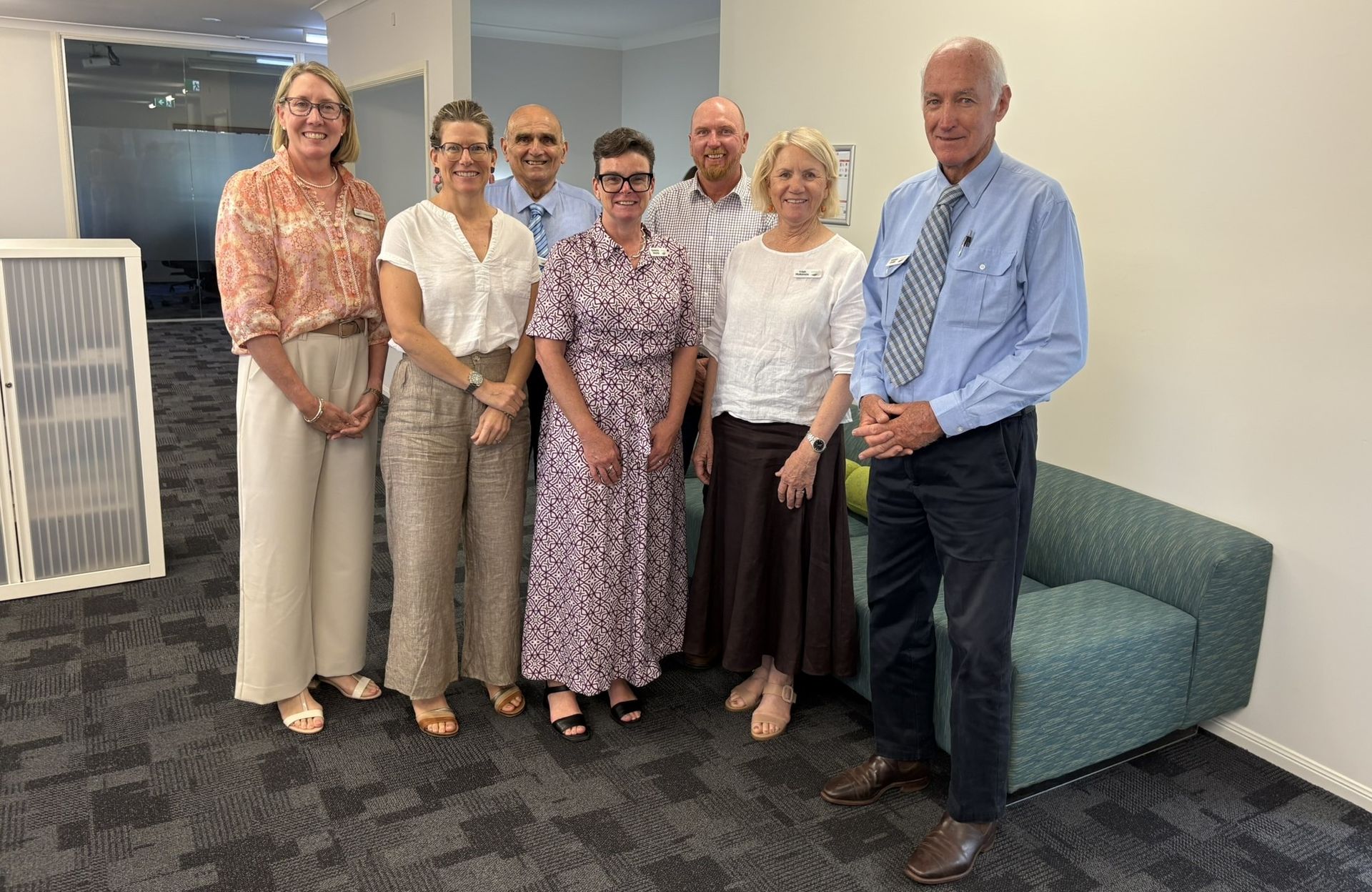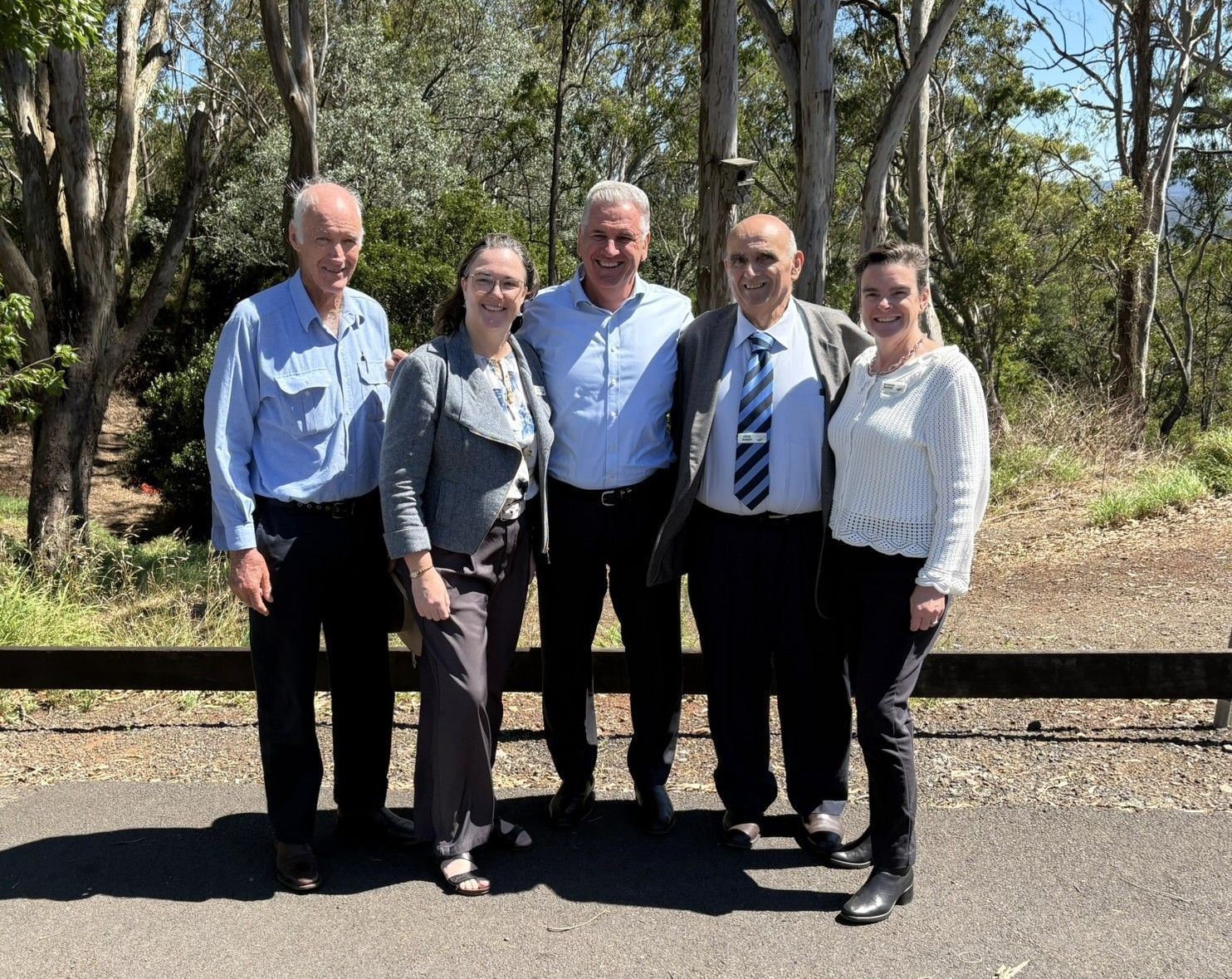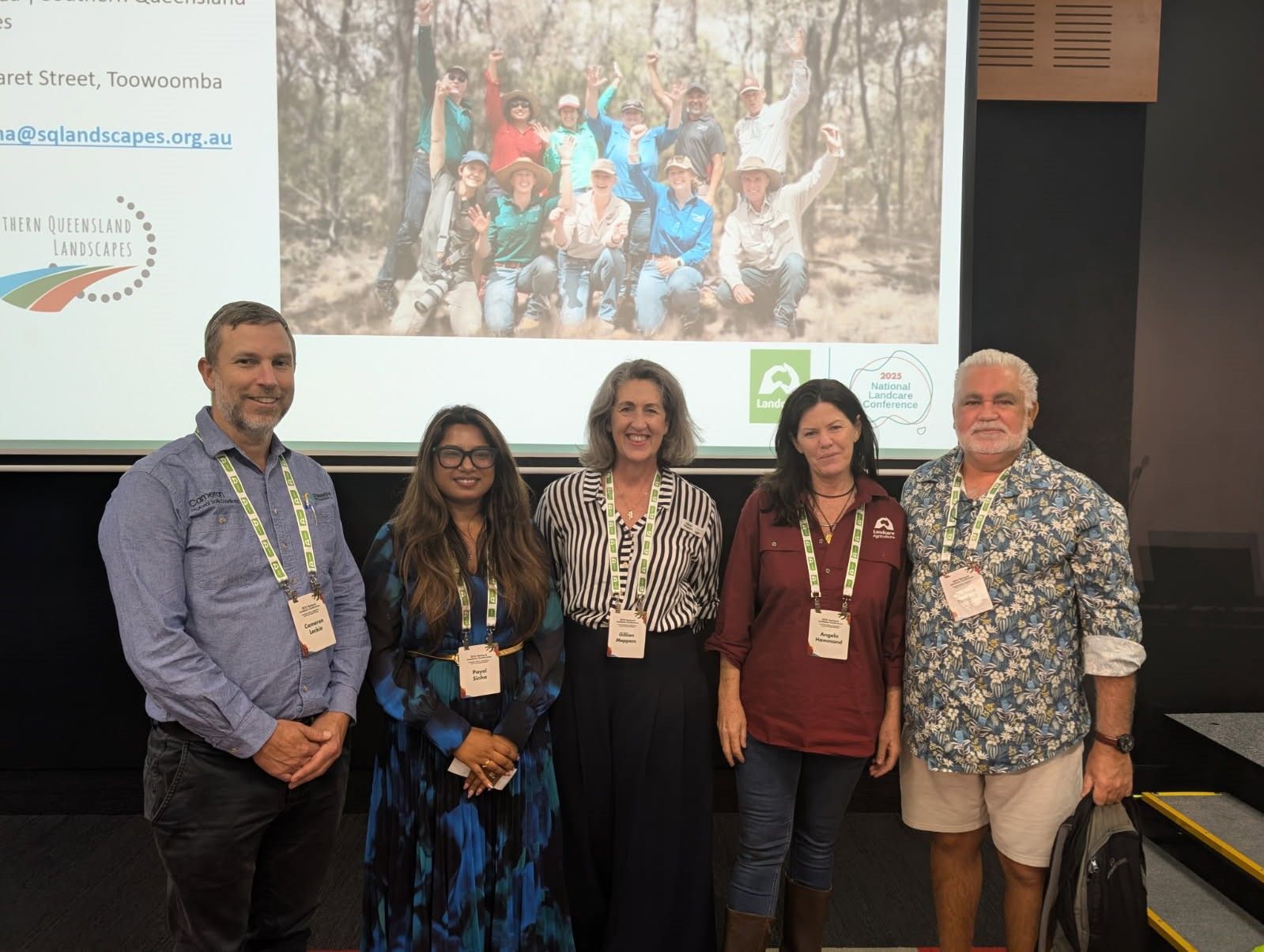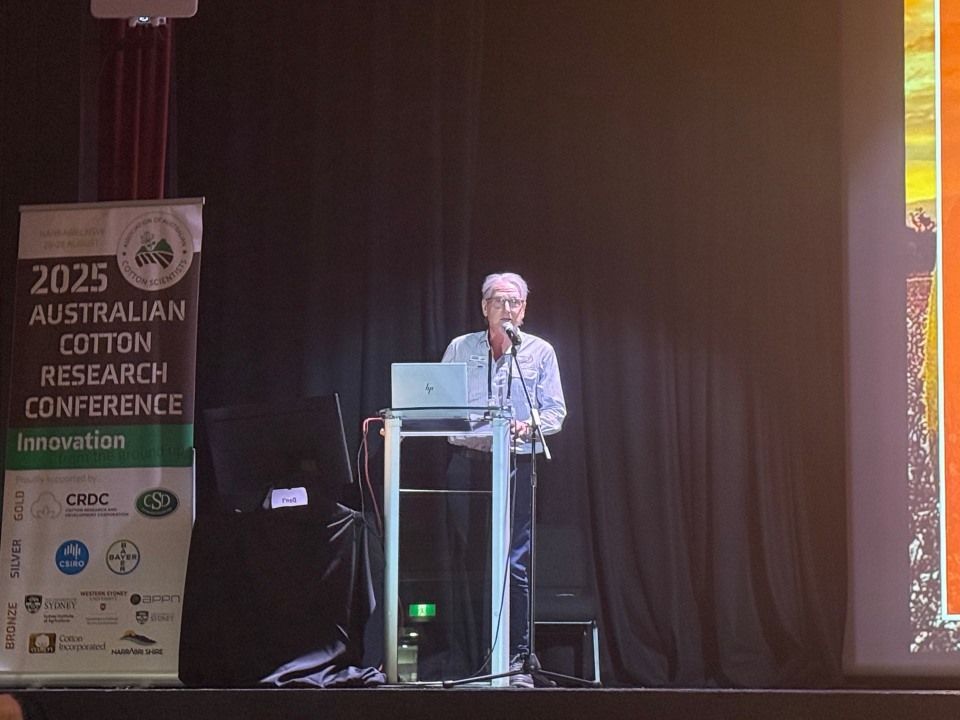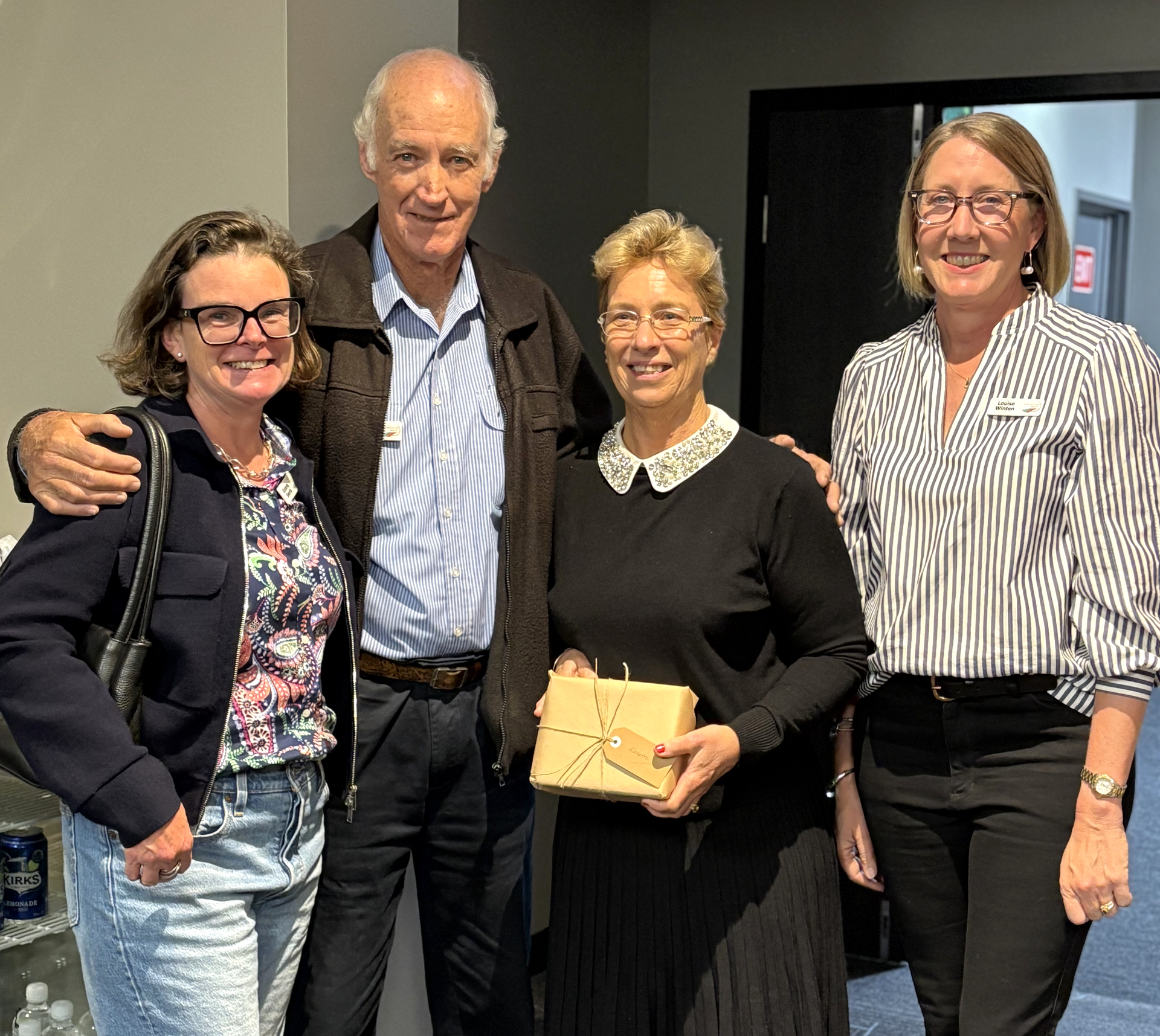By Kim Woods at the National Wild Dog Action Plan
A year down the track from three cluster fences being finished in Southern Queensland and the participating pastoralists are back in the business of farming with an air of confidence.
SQ Landscapes worked for over two years with land managers in the Eromanga, Eulo and Bollon areas to deliver 446km of new exclusion fencing to encompass around 325,000 hectares of sheep, cattle and goat production across 12 properties for protection from wild dogs.
Funded under Queensland Feral Pest Initiative round three, the project filled the gaps between private and previously funded exclusion fences to improve the management of total grazing pressure and predators across the region.
The journey wasn’t an easy one as landholders struggled with drought followed by the impacts of drought, flood, rain, a pandemic, increasing costs of materials and delays.
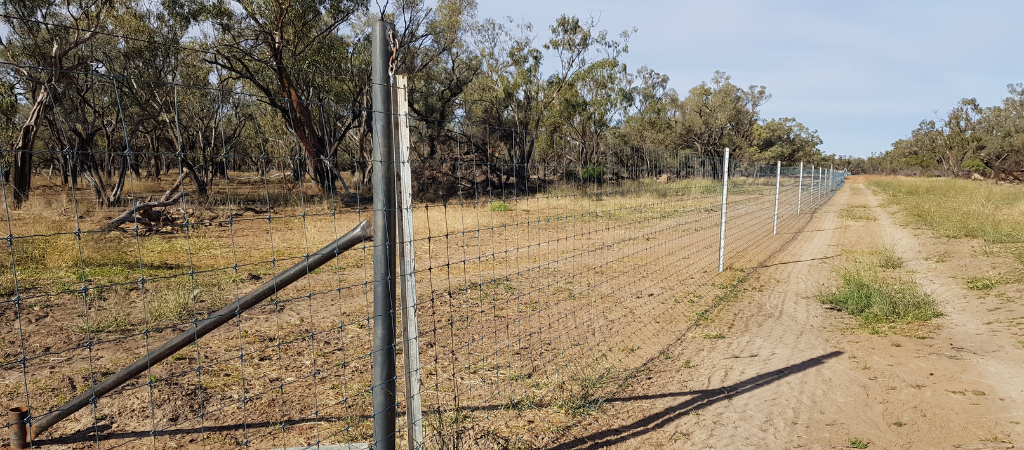
SQ Landscapes worked for over two years with land managers in the Eromanga, Eulo and Bollon areas to deliver 446km of new exclusion fencing to encompass around 325,000 hectares of sheep, cattle and goat production across 12 properties for protection from wild dogs.
Eromanga East Cluster is 156km enclosing six properties with an area of 130,000ha while Mirage Garrawin Cluster is 227km enclosing three properties with an area of 145,000ha and Lower Nebine Cluster fence is 63km enclosing three properties with an area of 50,000ha.
SQ Landscapes Project Delivery Lead Chris Crafter, Charleville, said those landholders who initially registered for the clusters had their livelihoods severely impacted by wild dogs and feral pigs.
“They couldn’t spell country due to the total grazing pressure of other species and every one of them said getting an exclusion fence was a no brainer if they wanted to run sheep or goats,” Chris Crafter said.
“Some of them had switched into cattle while others are now keeping their cattle and diversifying into small stock whilst changing their grazing regimes inside the fences to take advantage of new opportunities," Ms Crafter said.
“Eromanga East Cluster is a number of properties surrounding Eromanga township and nestled between several other clusters, and they were being impacted by wild dogs coming from several different directions," she said.
“That cluster was very well organised with all the people working together, sharing equipment and labour. They had incredible challenges during the construction of the fence including floods."
“When we began working with these clusters it was at the end of severe drought and with the change in the weather sections of the fence were going under metres of water. They had issues with material supply and the pandemic but they managed to keep on track," Chris Crafter said.
“We facilitated the funding while the landholders organised the materials, supplier contracts and co-funding.” Ms Crafter said.
Ms Crafter said the Mirage Garrawin Cluster was reasonably isolated and the three properties have since erected exclusion fencing around their boundaries and internally.
“There have been no wild dogs detected within the exclusion area for a while and macropod grazing pressure is back to manageable levels but feral pig control is an ongoing task,” Chris Crafter said.
The Lower Nebine Cluster comprises three properties on the Wallam Creeks floodplain east of Cunnamulla," Ms Crafter said.
“The fencing has made a huge difference to them to be able control predators, pests and total grazing pressure,” she said.
“All three clusters were challenged by the wet weather but they have a good system of flood gates which allow debris through then swing back down.”
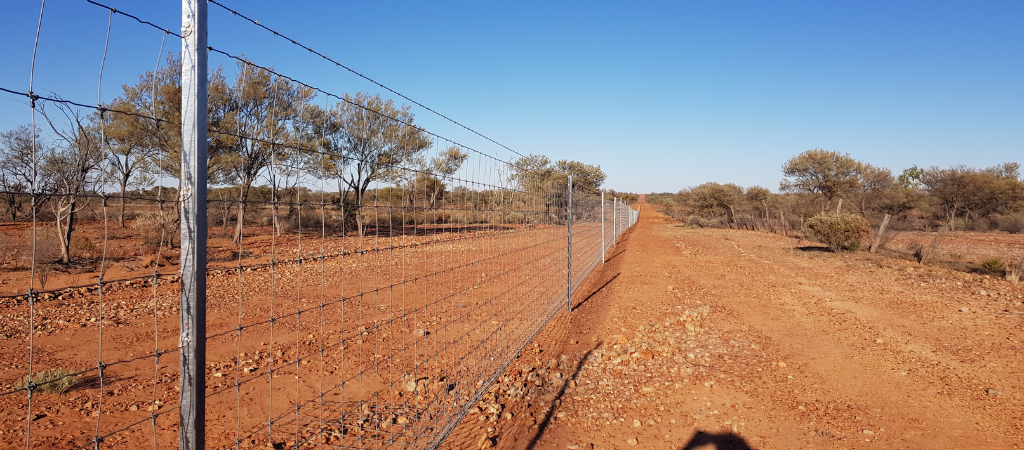
“The fencing has made a huge difference to them to be able control predators, pests and total grazing pressure,” Chris Crafter said.
Ms Crafter said the fences have given landholders confidence to diversify into small stock, using goats to browse on the woody vegetation followed by rotationally grazed cattle and sheep.
She said lambing and kidding rates post-fencing had risen significantly and SQ Landscapes was facilitating shearing schools in the region at the Croxdale Learning Centre to help fill the skills gap.
“The clusters certainly boosted the local economies with materials, trucks, fuel, and labour. There has been extra employment on the fences and working with livestock – some assisted by the good seasons but also by landowners being much more optimistic about the future and they can see a way forward,” Chris Crafter said.
SQ Landscapes collaborated on the clusters with the local shire councils, Queensland Department of Agriculture and Fisheries, and Biosecurity Queensland.
“The exclusion fences are not a silver bullet and the landholders do need to continue their pest control and adjust their grazing practices. Some are using remote cameras or drones to monitor the fences while others use professional wild dog controllers,” Ms Crafter said.
“When it comes to those outside the clusters, some have benefited from being on a boundary but other people in the bottlenecks have transient pest animals putting pressure on them. They are turning to electric fencing and other strategies to deal with wild dogs and feral pigs," she said.
“The landholders in the clusters are happy they have done the fencing and are now reaping the benefits after a few good seasons. They have been able to get their lambing and kidding rates up, and get a bit of cash turnover to pay debts."
“The change in grazing pressure and diversification of animals have changed the dynamics in the landscape with some properties in much better condition. The increase in environmental condition does lead to increases in other wildlife such as quails, reptiles, small mammals, and water birds," Chris Crafter said.
“For SQ Landscapes, we saw landholders at the start of the projects at the lowest low, they were in a bad way. Once they started to work together and see results, we started to see them smile and get a bit of hope back, and now three years on, I can see a big change in people.” Ms Crafter said.
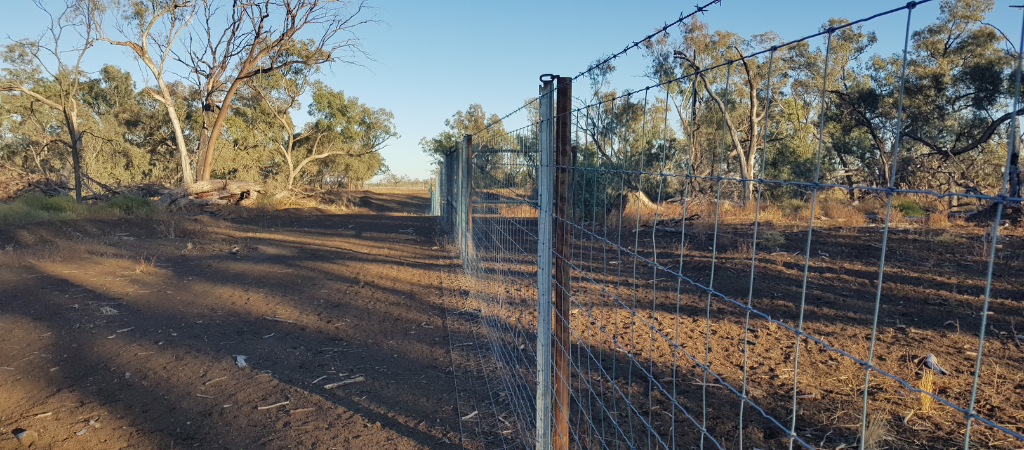
“The change in grazing pressure and diversification of animals have changed the dynamics in the landscape with some properties in much better condition. The increase in environmental condition does lead to increases in other wildlife such as quails, reptiles, small mammals, and water birds," Chris Crafter said.
A member of the Eromanga East Cluster, Brendan Murphy described his sheep enterprise as being on its “last legs” due to wild dog predation before the erection of 380km of external and internal exclusion fencing.
“The flock was just getting eaten. We had no real hope at all. We went from 100 per cent lambing in the crossbred flock down to 70 then 60 and finally 40 per cent on a double joining. It was just hopeless,” Brendan Murphy said.
“The wild dogs were even taking the sheep while we were mustering. We had never slacked off on our dog control but there was just too many," Mr Murphy said.
“Once the first section of fence was up, the ewe flock in one year went to 100 per cent lambing," he said.
“For the first time in 20 years we shore 10,000 sheep this year and we haven’t bought any. It has made a massive difference to us, otherwise we would be out of sheep altogether and probably off the land.”
Mr Murphy said the floods had caused damage to 100km of exclusion fence resulting in incursions of wild dogs.
He has modified his wild dog control program by strategically baiting year-round in areas of activity rather than blanket baiting three times a year.
Cunnamulla grazier Ben McKenzie was almost completely destocked due to drought when he started on his section of the Lower Nebine Cluster.
After experiencing low wild dog activity for many years, his rangeland goat herd had been impacted by wild dogs being funnelled into his property from other recent exclusion fencing clusters despite a ground baiting program.
Mr McKenzie, who has now completed 130km of internal exclusion fencing with 40km remaining, said the fencing resulted in improved control over total grazing pressure and stocking rates.
He has now restocked the property with goats, cattle and sheep, and strategically baits for wild dogs, foxes and feral cats whilst participating in regional aerial baiting programs.
“Fencing is not the be-all end-all, it’s not the last tool or a final measure by any means but is definitely the best tool we have, and baiting, trapping and thermal scopes are complementary," Ben McKenzie said.
“SQ Landscapes made the whole process straight forward and simple.” Mr McKenzie said.
